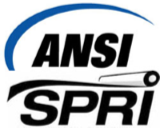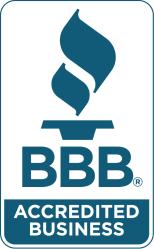Metal Roofing Systems
Not all metal roof systems are created equal. In recent years, metal roofing has become more economical as many big box retailers have entered the metal roofing arena with exposed fastener panels. These roof systems have traditionally been installed on agricultural buildings and barns but not on residential or commercial roofs. Exposed fastener roofing systems are also called R panels, crimp panels, and rib panels. They are typically fabricated in 3 foot wide by 10 foot long panels and are screwed directly to the purlins or roof substrate. Let’s examine the difference between standing seam metal roofs and exposed fastener systems.
Standing Seam
Standing seam metal roofs are roll formed in a continuous manner so there are usually no vertical seams in the panel. The metal panels are secured to the roof system with a panel clip which is covered by the adjacent metal panel, so no fasteners are exposed to the weather or visible from the roof. The panel clip provides excellent wind uplift protection but also allows the metal to expand and contract without restriction. Standing seam roof systems are durable, provide a class A fire rating, are highly reflective and environmentally friendly in a number of ways. Standing seam roofing is built to last and because of this, lifetime warranties are available.
Metal Panel Systems offers warranties the following standing seam roofing systems:
Exposed Fastener Metal Roof System
Unlike standing seam roof systems where the fasteners are hidden, Rib panels or exposed fastener metal roof systems include up to 35 fasteners per 3’ x 10’ panel. This type of roof system also has seams throughout the roof at the panels’ end laps and side laps. The benefits to the exposed fastener roof system is that it is economical and easy to install. The panel is versatile as well. It can also be installed on vertical walls and serve as a wall panel.
The problem with exposed fastener panels that are used for roofing applications is that they are prone to roof leaks at the fasteners. Roof systems are most vulnerable around penetrations. Even if each fastener (as many as 115 per square) is driven properly; the fasteners can be problematic over time. Corrugated metal roofing panels are not recommended on low slope applications either. Fasteners on lower pitched roofs are more likely to allow water to infiltrate. Metal Panel Systems recommends the SL-100 or SL-150 on roof slopes less than 3/12.
Reasons Why Exposed Fasteners Fail
The metal screws used on exposed fastener roofing systems have a neoprene gasket that protects the panel from water infiltration. However, the gasket is susceptible to degradation from UV radiation and will break down over time. When this occurs, every fastener on the roof becomes a maintenance item and a penetration that is capable of allowing water into the roof system.
When a screw is used to mechanically attach a roof system through a metal panel it is exposed to pressure caused by thermal movement. This causes the seal between the fastener and the metal panel on the surface of the roof to loosen over time. Areas like the midwestern U.S. have more problems with thermal movement in metal roofing systems than those with consistently warmer climates found in the southern U.S.
Which System is Right for Me?
There are many things to consider when designing a roof system. Exposed fastener systems such as Metal Panel Systems Premier AG and Premier PBR panels are excellent choices for agricultural buildings, wall panels, and many other roofing applications. They are economical and easy to install, but they do not stand up to mother nature like a standing seam metal roof system.
Comparison Between Standing Seam and Corrugated Panels
Standing Seam Roof Exposed Fastener Roof
Maintenance Minimal Significant
Penetrations Minimal Thousands
Laps Minimal Dozens
Cost Higher Low
Installation Difficult Easy
Thermal Movement Unrestricted Restricted
Slope Limitations ½” in 12 3/12
Warranty up to 50 Years None
For assistance in designing your metal panel roof system, Contact Us.




